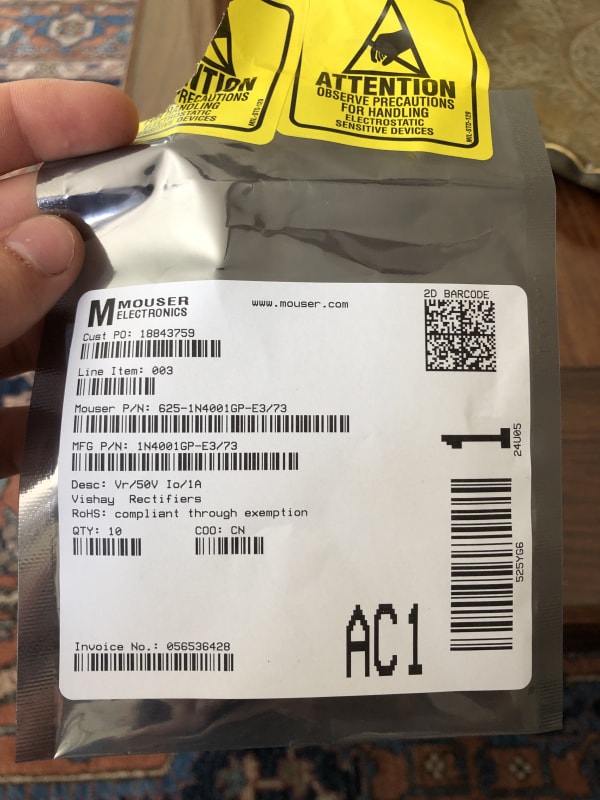Sam Neall
Mechanical
- Mar 26, 2020
- 32
I have a small diffuser driver that I would like to hook up to an Arduino motor shield .
The problem is that this shield can switch polarity on it’s outputs and the diffuser driver will burn out if polarity is switched on its input. So basically if I mess up a small part of the code, the diffuser driver will burn out. Can I connect the positive the diffuser driver to only one of the outputs on the shield then just use a completely different ground. So, if the motor shield decides to switch polarity, it’ll just be going to a pin that has nothing connected to it.
Is this design problematic? If it is, what is another solution to deal with this.
The problem is that this shield can switch polarity on it’s outputs and the diffuser driver will burn out if polarity is switched on its input. So basically if I mess up a small part of the code, the diffuser driver will burn out. Can I connect the positive the diffuser driver to only one of the outputs on the shield then just use a completely different ground. So, if the motor shield decides to switch polarity, it’ll just be going to a pin that has nothing connected to it.
Is this design problematic? If it is, what is another solution to deal with this.


